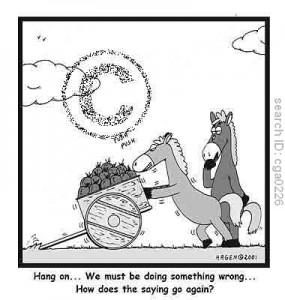As I have blogged before every assay has its limitations. There is no such thing as a perfect test.
I have blogged before on metrology and Uncertainty Measurement (UM). Even the mighty International Standard, ISO 17025, in Section 5.4.6 only applies the concept of UM to the quantitative measure and to the quantitative measure alone. Hence, this standard results not in a true expression of the Bayesian-based expanded uncertainty budget, but instead only part of it. In order to do so, to report full Bayesian-based expanded uncertainty budget, it must also must be an expression of the uncertainty in the qualitative measure as well to be truly metrologically responsible.
I ponder openly here with all of you the following: what is the use of expressing uncertainty in the quantitative result if we are not as scientifically sure as possible of what we in fact measuring?
Can any of you answer that for me?
It is really the story of specificity versus selectivity.
The International Union of Pure and Applied Chemistry (IUPAC), which is the world authority on chemical nomenclature, terminology, standardized methods for measurement, atomic weights and other critically evaluated data and others have defined the difference between these often confused terms as follows:
A specific reaction or test is one that occurs only with the substance of interest, while a selective reaction or test is one that can occur with other substances but exhibits a degree of preference for the substance of interest. Few reactions are specific, but many “exhibit selectivity”.
Other common definitions include:
Selectivity gives an indication of how strongly the result is affected by other components in the sample.
and also
Selectivity refers to the extent to which the method can be used to determine particular analytes in mixtures or matrices without interferences from other components of similar behavior.
A selective test may be not a specific test due to cross-reactivity, interference, or codetermination.
There has been some remarkable research in trying to quantify and precisely express the uncertainty in the qualitative measure.
Some attempts have been made in the literature to quantify selectivity (and even specificity). These include:
- Massart et al. discussed both qualitative and quantitative aspects of selectivity and specificity. This approach involves quantification of a sensitivity factor matrix, K, involving n sensor responses for m components.
- Otto and Wegscheider compared different procedures to obtain figures of merit for the judgment of the selectivity of methods for multicomponent analysis.
- Lorber et al. have used the concept of net analyte signal and selectivity defined in terms of loss of signal due to spectral overlap in multivariate calibrations with some degree of success.
In the Courtroom, where certainty and relevant proof is demanded, we need to insist not just on Uncertainty Measurement in terms of quantitative matters, but also in qualitative matters.
____
Hat tip to Josh Lee, Esquire for his contribution to this blog post.



